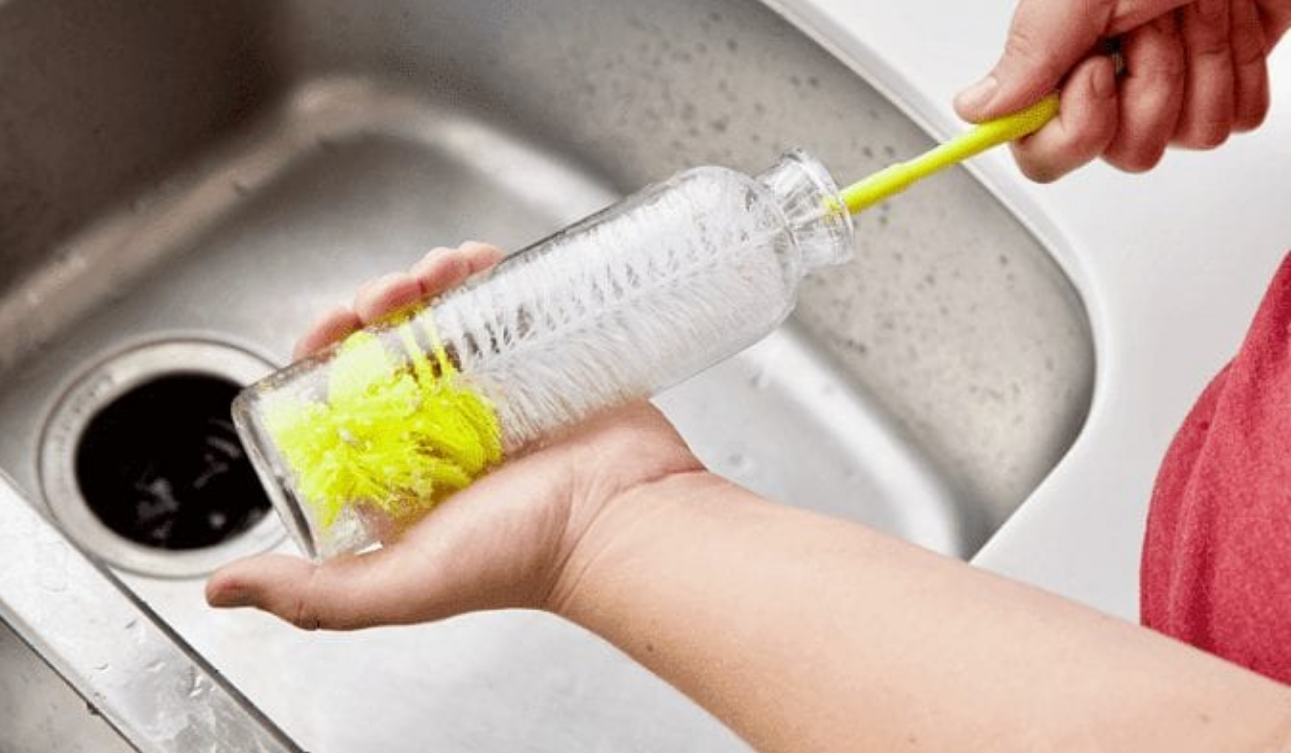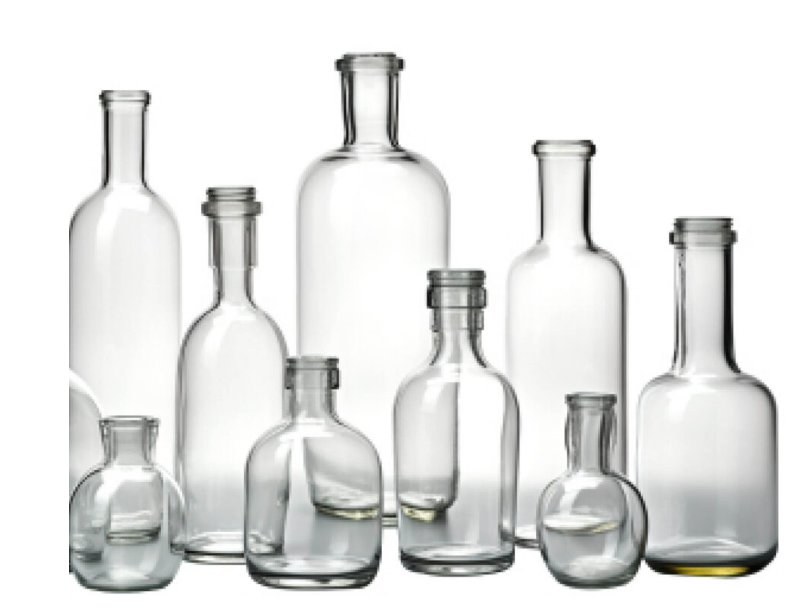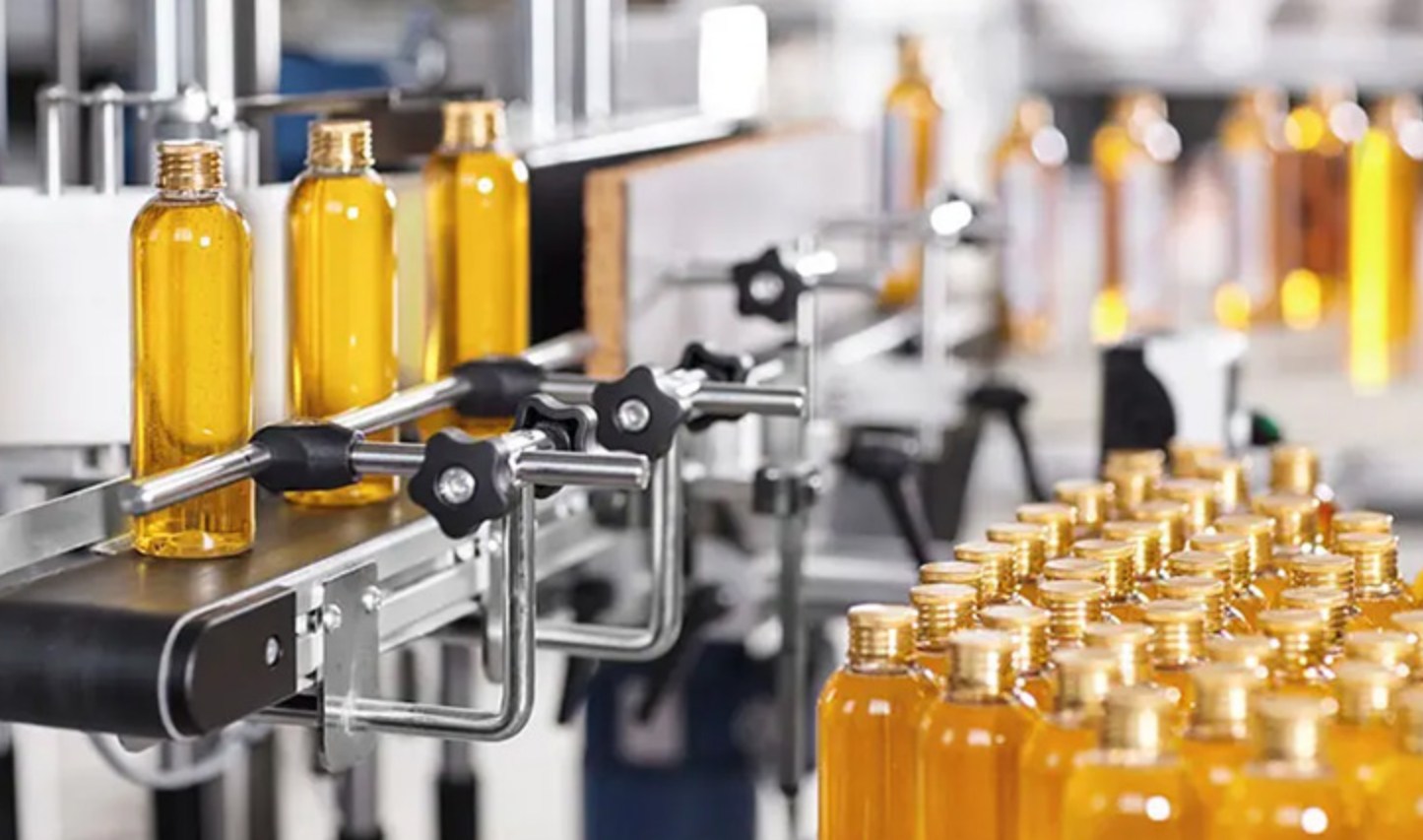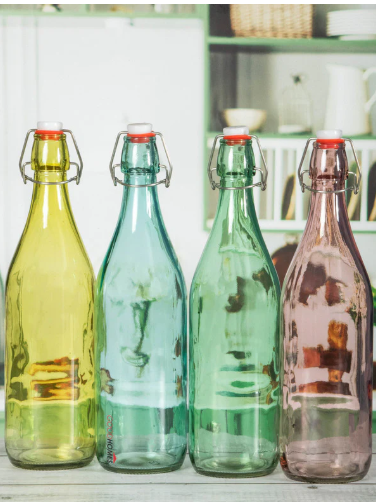Introduction
In the world of premium packaging,glass bottlesare more than simple containers—they are a statement of quality, brand identity, and consumer trust.
Whether you’re a procurement manager sourcing for a skincare line, a brand founder launching a new aromatherapy collection, or a distributor managing inventory for global beauty brands, keeping your glass bottles clean and in optimal condition is essential. Clean bottles not only preserve the aesthetic appeal of your products but also ensure hygiene, product safety, and a positive unboxing experience for your customers.

Yet,glass bottles—especially those used for cosmetics, essential oils, or specialty food and beverage—demand careful maintenance. Residue, stains, or improper storage can compromise both the appearance and integrity of the packaging.
In this comprehensive guide, we’ll share practical, professional tips for cleaning, maintaining, and storing glass bottles, with insights tailored to B2B buyers and brand owners. As a leading OEM/ODM expert in essential oil and cosmetic packaging, PauPack Bottles is dedicated to helping our partners maximize the longevity and value of every bottle.
1.Why Clean Glass Bottles Matter for Brands and Buyers
Cleanglass bottlesare the foundation of product quality and brand reputation. For B2B buyers, the cleanliness of your packaging directly impacts your ability to meet regulatory standards, maintain product safety, and deliver a premium experience to your customers. Dirty or stained bottles can harbor bacteria, compromise product formulas, and trigger consumer complaints or costly recalls.
From a brand perspective, pristine bottles enhance visual appeal, reinforce your commitment to excellence, and differentiate your products on crowded shelves. Clean packaging is especially critical for transparent or colored glass, where residue or cloudiness is immediately visible. In the age of social media, even a single negative review about packaging cleanliness can damage your brand’s image.
Moreover, for refillable or reusable packaging programs, maintaining bottle hygiene is essential for sustainability and customer satisfaction. Brands that educate their customers and partners on proper cleaning practices not only extend the life of their packaging but also build trust and loyalty.

2.Essential Tools and Materials for Effective Glass Bottle Cleaning
To achieve thorough and efficient cleaning, it’s crucial to have the right tools and materials on hand. Professional cleaning goes beyond a quick rinse—it requires a combination of specialized brushes, gentle cleaning agents, and proper drying techniques.
Key tools include:
-
Bottle brushes: Choose sizes and shapes that reach all interior surfaces, including narrow necks and corners.
-
Soft cloths or sponges: For exterior surfaces and delicate finishes.
-
Mild detergents: Avoid harsh chemicals that can etch or discolor the glass.
-
Vinegar or baking soda: Natural alternatives for removing stubborn stains or odors.
-
Rinse aids: To prevent water spots and streaks.
-
Drying racks or lint-free towels: For air drying without leaving fibers or marks.
For B2B operations, investing in ultrasonic cleaning machines or automated bottle washers can streamline the process, especially for large batches or high-throughput environments. Always ensure that cleaning agents are compatible with your product formulas and regulatory requirements.
3.PauPack Bottles: Setting the Standard for Clean, Safe, and Sustainable Packaging
At PauPack Bottles, we understand that packaging is not just a vessel—it’s a vital part of your product’s story and your brand’s promise. As a trusted pcr bottle manufacturer, pcr bottle supplier, and pcr bottle oem, we go above and beyond to ensure every bottle that leaves our facility meets the highest standards of cleanliness, safety, and sustainability.
Our approach includes:
-
Rigorous Pre-Shipment Cleaning: Every batch undergoes ultrasonic washing, high-pressure rinsing, and air drying in a dust-free environment. This ensures bottles are free from dust, residue, and contaminants before packaging and shipping.
-
Quality Control Protocols: We implement multi-point inspections for cleanliness, clarity, and structural integrity. Our ISO, FDA, and SGS certifications reflect our commitment to international hygiene standards.
-
Sustainable Cleaning Practices: We use closed-loop water systems and biodegradable detergents to minimize environmental impact, aligning with our clients’ ESG goals.
-
Custom Solutions for B2B Clients: Need bottles pre-sterilized or individually wrapped? We offer tailored services for sensitive applications like essential oils, pharmaceuticals, and premium cosmetics.
-
Education and Support: We provide detailed cleaning and maintenance guides for our partners, empowering brands to maximize the lifespan and appeal of their packaging.
As your strategic packaging partner, PauPack Bottles is dedicated to solving common pain points—sample delays, inconsistent quality, inflexible MOQs—while ensuring your products always make the best first impression.
4.Step-by-Step Guide to Cleaning Different Types of Glass Bottles
Not all glass bottles are created equal. Decorative, colored, or specialty bottles may require unique cleaning approaches to preserve their beauty and functionality. Here’s a step-by-step guide for various bottle types:
A. Standard Bottles (Clear or Colored)
-
Rinse immediately after use to prevent residue from drying.
-
Fill with warm water and a small amount of mild detergent; use a bottle brush to scrub all interior surfaces.
-
For stubborn stains, add a tablespoon of baking soda or vinegar and let soak for 30 minutes before scrubbing.
-
Rinse thoroughly with clean water to remove all soap.
-
Air dry upside down on a rack or use a lint-free towel.
B. Decorative Bottles
-
Avoid abrasive brushes or harsh chemicals that can damage designs or finishes.
-
Use a soft cloth or cotton swab with mild detergent for delicate areas.
-
For intricate decorations, a soft-bristled toothbrush can help reach crevices.
-
Dry gently, avoiding friction on decorative elements.
C. Perfume and Essential Oil Bottles
-
Do not submerge atomizers or stoppers; instead, wipe the exterior with a damp soft cloth.
-
For interior cleaning, rinse with alcohol to dissolve oil residues, then rinse with water.
-
Allow to air dry completely before reuse.
D. Antique or Collectible Bottles
-
Research specific cleaning recommendations for valuable antiques.
-
Avoid aggressive cleaning; consult a professional conservator if unsure.
-
Use distilled water and mild soap, and avoid soaking for extended periods.
5.Removing Stubborn Stains, Odors, and Residue
Even with regular cleaning, glass bottles can develop stains, cloudy patches, or lingering odors—especially if used for oils, vinegars, or strong fragrances. Here are proven techniques to restore clarity and freshness:
-
Soak bottles in a solution of equal parts vinegar and water for several hours to dissolve mineral deposits.
-
For tough stains, fill the bottle with warm water, add a spoonful of uncooked rice, and shake vigorously. The rice acts as a gentle abrasive.
-
Baking soda paste can be applied to stubborn spots, left for 15 minutes, then rinsed.
-
For persistent odors, rinse with a mixture of water and lemon juice, then air dry in sunlight.
-
Avoid using bleach or harsh chemicals, as they can damage glass and leave residues harmful to cosmetic or food products.
For B2B buyers, maintaining a consistent cleaning protocol ensures every bottle meets your brand’s quality standards and regulatory requirements.
6.Proper Drying and Storage to Prevent Contamination
After cleaning, how you dry and store your glass bottles is just as important as the washing process. Improper drying can lead to water spots, streaks, or even mold growth inside the bottle.
Best practices include:
-
Air dry bottles upside down on a clean, elevated rack to allow water to drain completely.
-
Use lint-free towels for manual drying, especially for bottles with narrow necks or decorative finishes.
-
Ensure bottles are completely dry before capping or sealing to prevent trapped moisture.
-
Store bottles in a clean, dust-free environment, ideally in original packaging or covered racks.
-
For long-term storage, avoid direct sunlight and extreme temperatures, which can weaken glass or fade colors.
For brands with refill or reuse programs, providing customers with clear drying and storage instructions can enhance product longevity and satisfaction.
7.Special Care for High-Value and Specialty Bottles
Premium, collectible, or limited-edition glass bottles require extra attention. For these, consider:
-
Handling with gloves to prevent fingerprints or oil transfer.
-
Using acid-free tissue paper or foam inserts for storage and shipping.
-
Avoiding stacking or overcrowding bottles to prevent scratches or breakage.
-
Scheduling periodic inspections for signs of damage or deterioration.
At PauPack Bottles, we offer custom packaging and protective solutions for high-value shipments, ensuring your products arrive in perfect condition worldwide.
8.Cleaning Glass Bottles in Bulk: Industrial and B2B Solutions
For brands and distributors managing large inventories, manual cleaning is impractical. Industrial solutions include:
-
Automated bottle washers with programmable cycles for different bottle types.
-
Ultrasonic cleaning systems for deep, residue-free cleaning.
-
Conveyorized drying tunnels for rapid, contact-free drying.
-
Integrated inspection systems for quality control.
Partnering with a supplier like PauPack Bottles, who offers pre-cleaned and quality-inspected bottles, can dramatically reduce your operational workload and ensure consistent results.

9.Sustainability and Eco-Friendly Cleaning Practices
Sustainability is at the heart of modern packaging. Eco-friendly cleaning practices not only reduce environmental impact but also align with consumer and regulatory expectations.
Tips include:
-
Using biodegradable, non-toxic detergents and cleaning agents.
-
Recycling rinse water through closed-loop systems.
-
Minimizing energy consumption with efficient equipment and air drying.
-
Encouraging bottle reuse and refill programs to extend packaging life.
-
Educating customers and partners on sustainable cleaning and disposal.
PauPack Bottles integrates green cleaning protocols and supports brands in achieving their ESG and circular economy goals.
10.Training Your Team and Customers for Optimal Results
Even the best cleaning protocols are only effective if properly implemented. For B2B buyers, investing in staff training and customer education pays dividends in product quality and brand reputation.
Best practices:
-
Develop clear SOPs (Standard Operating Procedures) for cleaning, drying, and storage.
-
Train warehouse and production staff on handling and inspection.
-
Provide instructional materials or videos for customers participating in refill or reuse programs.
-
Collect feedback and continuously improve your processes based on user experience.
At PauPack Bottles, we offer partner training and support to ensure every stakeholder is equipped for success.
Conclusion
Maintaining clean, pristine glass bottles is a shared responsibility between brands, suppliers, and end-users. By following these professional tips and leveraging the support of an experienced partner like PauPack Bottles, you can ensure your packaging always reflects the quality and care behind your products.
As your trusted pcr bottle manufacturer, pcr bottle supplier, and pcr bottle oem, PauPack Bottles is committed to delivering not just packaging, but peace of mind. From rigorous cleaning and inspection to sustainable practices and global logistics, we help you build a brand that stands out for all the right reasons.
Ready to upgrade your glass bottle maintenance and packaging program? Discover our custom solutions and let’s set new standards for quality and sustainability together.




![Top 10 Beer Bottle Decoration Ideas[2025 Updated]](https://ptwebimg.pinshop.com/i/2025/06/05/112ai28-3.png)
![Top 10 glass water bottle decoration ideas[2025 Updated]](https://ptwebimg.pinshop.com/i/2025/06/05/otrjba-3.png)

![Top 10 Glass Lunch Box Manufacturers in China[2025 Updated]](https://ptwebimg.pinshop.com/i/2025/06/04/umxkav-3.png)
![China's top 5 borosilicate glass storage tank manufacturers [Updated in 2025]](https://ptwebimg.pinshop.com/i/2025/06/04/2awxzd-3.png)
